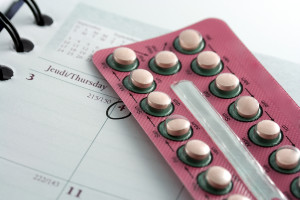I have to say, I love testing!!! I am so lucky and grateful that medicine has developed methods of testing that we naturopaths can use to identify problems we suspect in our patients. In the past, naturopaths have always taken detailed case histories, looked at physical signs and symptoms and deduced what is the most likely situation occurring for our patients.
Nowadays we are lucky to have all sorts of tests that can show us, and our patients exactly what is happening in their bodies! This can make treatment much more straight forward. We can identify the imbalance and go to work remedying straight away. Have you ever thought about investigating your hormone health? Many people don’t realise exactly what saliva hormone testing can tell then about their hormone health. Here are the most common findings I see on a regular basis, and a brief description of what they might mean.
Oestrogen Imbalance
This is a common result in both women and men. Yes that’s right, men have oestrogen too! Usually in men, we see higher oestrogen situations relating to excess body fat (especially excess tummy fat), sluggish detoxification and elimination of excess hormones thorough the liver, and imbalanced gut bacteria which can cause oestrogen to be recycled in the body instead of eliminated through the bowels.
In women, we often see high levels of ‘bad’ oestrogen and low levels of ‘good’ oestrogen. Did you know you have more than one type of oestrogen? We actually have 3! One (actually known as E1), can be related to oestrogen dependant cancers, and is often the culprit in “oestrogen-dominant” situations. The reasons behind these imbalances in women can be the same as in men, with the addition of the use of the oral contraceptive pill in the past, or HRT. Coffee can also increase oestrogen levels and contribute to high readings. You may also be away of environmental oestrogens such as xeno-oestrogens from plastics. They raise this ‘bad’ oestrogen too.
 Low Progesterone
Low Progesterone
This one is only for the girls. After ovulation, the ‘capsule’ the egg comes out of starts producing high levels of progesterone. In this way, ovulation and healthy progesterone levels are linked. In many of the tests I see, progesterone is low. If it is slightly low, it can just indicate that the woman did not ovulate on day 14 of her cycle (the normal time). If it is very low it could indicate that she isn’t ovulating at all. This is what we would expect after menopause, but many young women display this result, and it is worrying. It means that you are likely not having an ovulatory cycle, which would make falling pregnant very difficult. If you take or have taken the oral contraceptive pill, your body does not ovulate due to the synthetic oestrogen contained, so that may be one explanation. Another could be stress. Either way, progesterone has many beneficial effects on the body, and having healthy levels can help with our libido, moods, feelings of depression, thyroid health, and blood sugar regulation, to name a few. Low levels need to be improved for general health.
 High Testosterone
High Testosterone
This is for both the women and the men, but more often seen in women. For women, high testosterone levels often indicate the body searching for energy. This can mean that the adrenal glands are not keeping up with the energy demands placed on the body. Testosterone rises as a result. It can also indicate a sluggish liver, with hormones in general not being adequately excreted. This can be the likely explanation for men with high readings. High testosterone in men is not something I see regularly; it is more common to see low testosterone.
Low Testosterone
This is mainly for the men. Low testosterone is commonly seen hand in hand with high oestrogen levels in males, and therein lies the problem. The ‘mother’ hormone may be converted to oestrogen, and not testosterone. It is also seen in situations of low energy. If the ‘mother’ hormone is required in excess to fuel energy, cortisol can raise and testosterone can decrease as a result. As you can see, all these hormones work hand in hand.
Imbalanced Cortisol
This can mean a number of different scenarios result. Generally high cortisol is a situation where your body is stuck in a fight or flight response and you are more likely to feel wired or anxious, and your levels throughout the day are all elevated. Generally low cortisol can occur when your body can no longer meet the energy demands placed on it, and struggles to keep cortisol levels healthy. Exhaustion sets in as the adrenals struggle to keep producing healthy levels. This often occurs after periods of high cortisol, and is known as ‘adrenal exhaustion or fatigue’. There may often be a combination of the two, with low cortisol of a morning and high levels at night, resulting in exhaustion during the day, and insomnia or poor sleep at night. The combinations vary person to person, which is why saliva testing can be the best way to identify and treat your personal hormonal situation.
Not everyone tested has all of these imbalances, and each person will have a specific area (or areas) they need to address to improve their health. I hope you now have a better understanding of what saliva hormone testing can tell you! If you have any question, please feel free to post them below. 🙂
Rhianna
![]()
2 commentsAdd comment
Can you pls write more about Oestrogen Dominance and what we can do to help balance it?
Thanks!
I’ve never heard of this one. I’ve never been hospitalized, that’s why. I did not know this kind of test exists! Thank you for the info, Rhianna. This is something new to me. Interesting.